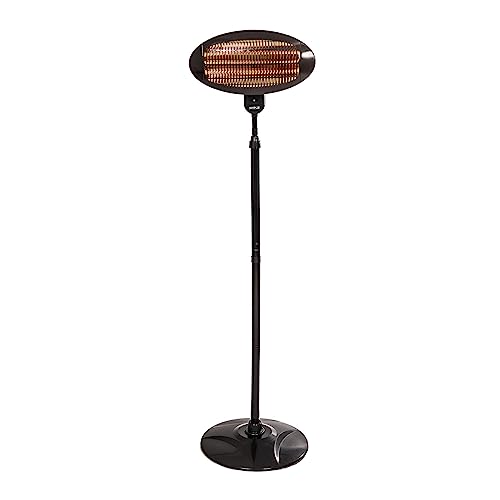How to Choose a Patio Heat Lamp Electric
There are many options available when you want to heat your patio. Unlike propane models that require refills electric heaters can provide instant heat by simply flicking the switch or pressing the button.
They don't emit gasses which could pose the risk of health hazards. Some models have adjustable temperature settings for varying distances.
Heater Type

You can relax in your outdoor living space throughout the day and all through the year with the proper patio heater. There are several types of patio heaters, including freestanding propane and natural gas models, as well as ceiling or wall-mounted electric radiant heaters. Your choice depends on the dimensions of your patio, existing power sources and individual preferences.
The majority of patio heaters use electricity, liquid or natural gas to generate heat. They release heat through convection heating as well as radiant heating. Their output of heat is measured in watts and can be converted to British thermal units (BTUs) to compare. Some models have adjustable heating settings to allow for greater flexibility.
outdoor heater for patio electric is the burner on top of a pole with a perforated screen that reflects the flames and radiates the heat downwards to warm people, furniture and other objects. Some come with a reflector above the burner that can be plated with silver to decrease the amount of heat lost upwards.
Gas patio heaters are the most commonly used patio heaters. They can heat several tables quickly and evenly. They can be portable and run off propane tanks or plumbed into your natural gas line which is more convenience and lower installation costs, but also needing ongoing costs for fuel.
Gas patio heaters are becoming more popular as more homes have natural gas lines. They are easy to install, but do require a dedicated and properly functioning gas line to function in a safe manner. Natural gas heaters that are portable are available with extension hoses that can help overcome this limitation, but they could be a trip risk and can create an additional fire risk when not being used.
Safety
Electric patio heaters can be used safely in covered areas, as they allow heat to radiate upward and not outward. They are not intended to be used on an unprotected roof. The heater should be placed at a minimum of 6" away from the ceiling, or 18" away from the wall in order to prevent fire hazards.
The propane and gas patio heaters are generally only safe to be installed in enclosed areas and are protected by an enduring cover specifically designed for use in open air. The covers are typically made of fire-retardant fabric and have an open roof that can be closed. These kinds of patio heaters pose safety concerns relating to the fumes and flames they generate. They should be kept away from flammable items like curtains and chairs.
Follow the instructions and safety guidelines of the manufacturer when installing the patio heater or heat lamp. Be sure to select a system with UL and CSA certifications, and read the owner's guide carefully. Make sure that the heater is not within the reach of pets and children. Some patio heaters that are freestanding like EUROM have a built-in tipping protection that shuts down the device if it falls over.
If your patio heater is connected to a natural gas line, you should be sure to check the condition of the line regularly and have it tested by a certified professional for leaks. If the line needs to be replaced, be sure to hire a licensed plumber. A professional can determine if the line has been properly routed or should be run through an underground pipe. A professional can also make sure the heater for your patio is connected into an outlet that is GFCI (ground fault circuit interrupter) certified to guard against electrical fires and shocks.
Installation
The size of the patio heater will determine the amount of heat it emits into the room. It is crucial that the heater be mounted in a safe distance from surfaces such as plastic, which can deform as well as wood, which can get too hot. Depending on the model of heater you may choose to place it on a wall or structure using standard mounting brackets. Some models feature soft starters that lowers the maximum current to ensure your circuits are protected.
